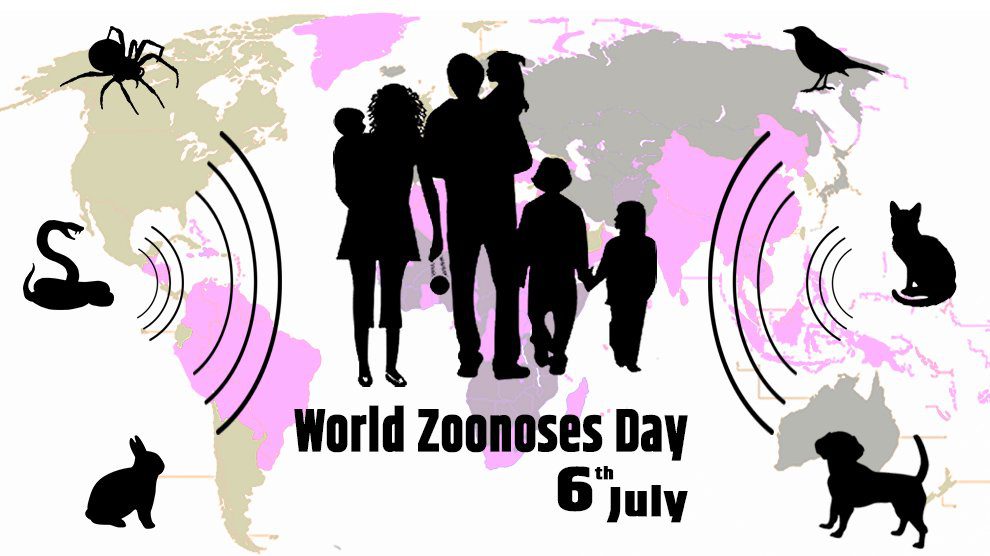World Zoonoses Day is observed every year on 6th July 2020 in order to raise the awareness for the risk of zoonotic diseases. The day was established on July 6, 1885, when Louis Pasteur successfully administered the first vaccine to fight against Rabies virus, a zoonotic disease.
World Zoonoses Day 2020
In order to celebrate this great achievement by Louis Pasteur, the day is observed. On the occasion of this day, we have arranged some of the major information regarding zoonoses in order to make you more aware as possible regarding the zoonotic disease.
What is Zoonoses?
Zoonoses are basically infectious diseases such as virus, bacteria and parasites that can be spread from animals to humans, and vice versa. Zoonoses can easily get spread from the direct contact with animals or by indirectly as well, vector-borne or food-borne.
Zoonoses have many modes of transmission like in direct zoonosis the disease is directly transmitted from animals to humans through a medium such as air (influenza) or through bites and saliva (rabies).
In contrast, the transmission can also occur through an intermediate species which is commonly referred to as a vector, which carry the disease pathogen deprived of getting infected. On the other hand, when humans infect animals, it is called reverse zoonosis or anthroponosis.
Zoonotic diseases are very common, for instance tick-borne encephalitis and borreliosis. But also at the same time, numerous foodborne infectious diseases such as salmonella, Yersinia, EHEC, botulism or campylobacter are all also zoonoses.
Types
The types of zoonosis consist of those caused by:
Virus
Bacteria
Fungus
Parasites
Zoonotic diseases that are spread by mosquitos as well as ticks are some of the most serious of these diseases.
Causes
Zoonotic transmission can occur in any circumstance in which there is companionistic (pets), economic (farming, etc.), predatory (hunting, butchering or consuming wild game) or research interactions or exchange with or intake of non-human animals, non-human animal products, as well as non-human animal by-products.
Zoonoses can be transmitted in several different ways and those are as follows:
- through the air
- by consuming contaminated meat or produce
- through close contact with already infected animal
- by touching an area or surface that have already been touched by an infected animal
- through insect bites such as mosquitos or ticks
Some of the examples of zoonotic diseases are as follows:
- animal flu
- anthrax
- bird flu
- bovine tuberculosis
- brucellosis
- giardiasis
- hemorrhagic colitis
- hepatitis E
- Lyme disease
- lymphocytic choriomeningitis
- malaria
- orf infection
- plague
- Q fever
- rabies
- rat-bite fever
- ringworm
- swine flu
- toxocariasis
- West Nile virus
- zoonotic diphtheria
How to avoid zoonotic diseases?
In order to avoid zoonotic diseases, you have to follow these simple precautions which are as follows:
Good hand hygiene by properly washing hands with soap as well as clean water
Avoid being bitten or scratched by an animal
Cover your body with Precautionary clothing for avoiding bites from mosquitoes, ticks and fleas
Use gloves if you need to handle an animal that seems to be sick.
Store and handle food safely in a clean place and cook it properly
Avoid bites as well as scratches from animals
Don’t eat, drink, or touch your mouth or eyes when you are in close contact with animals.
Keep the areas clean and sanitary where animals are kept.








